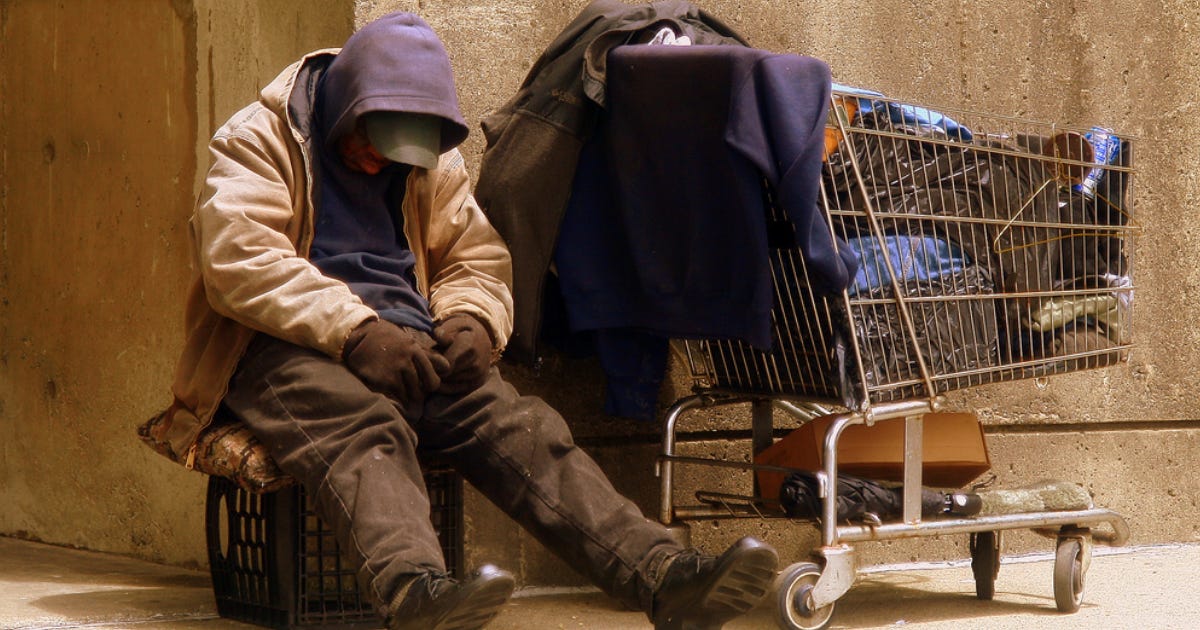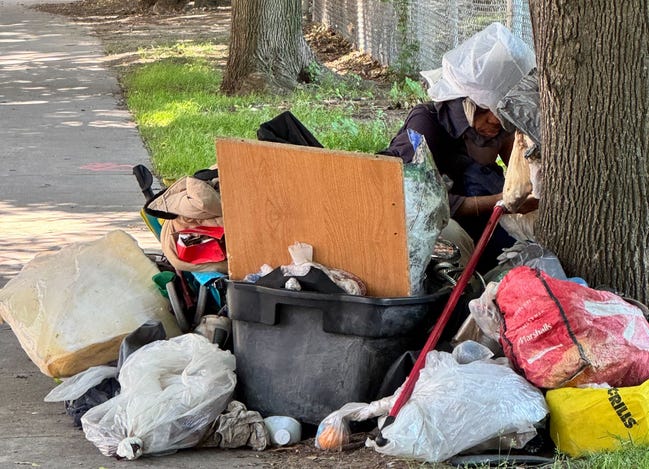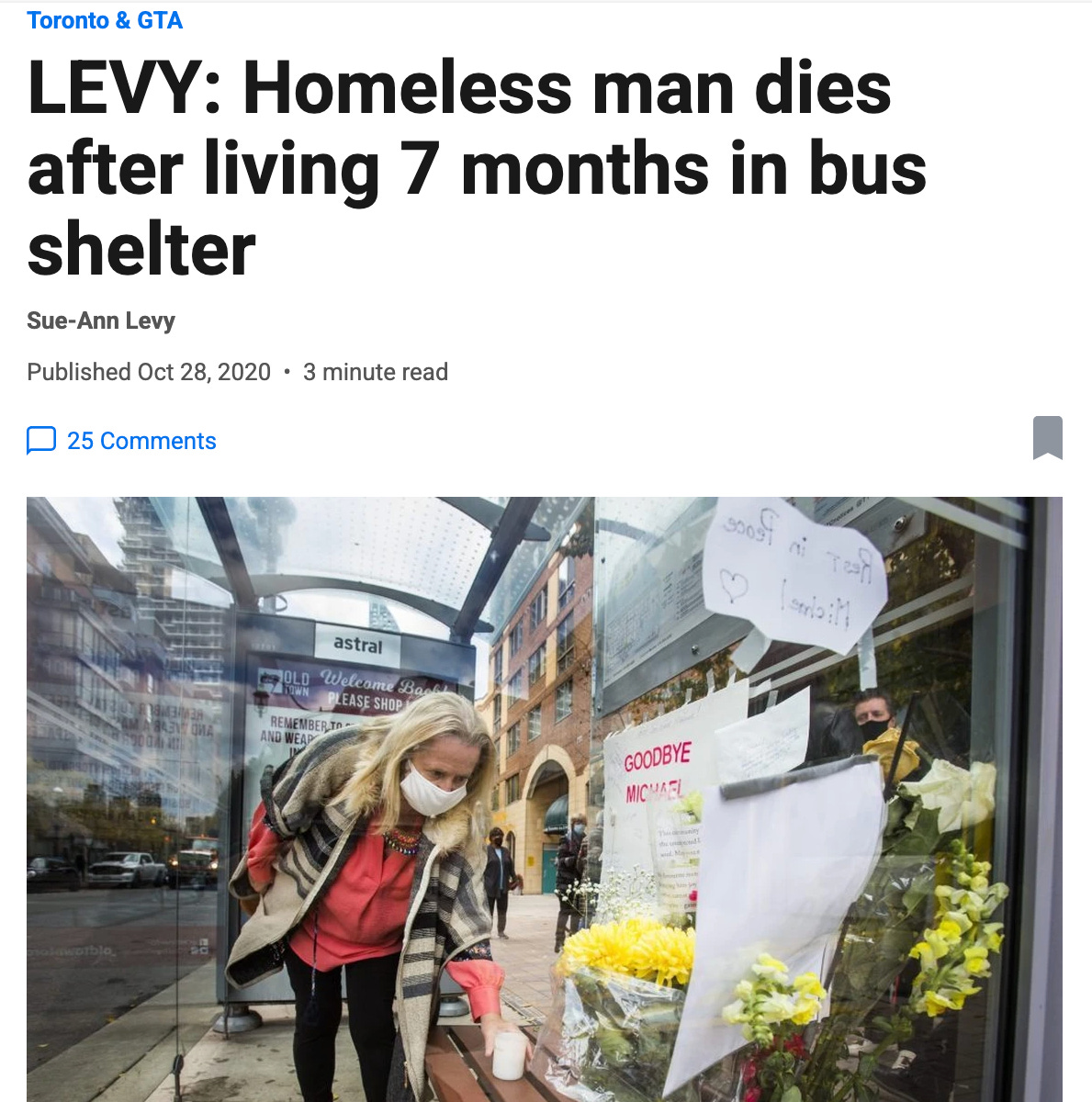OP-ED: Toronto’s woke progressive policies left this man to live in trash
Sue-Ann Levy writes, "The rise in street homelessness in Toronto and other Canadian cities under socialist mayors is a direct result of policies that have allowed in refugees and migrants."
By Sue-Ann Levy
Down in Old Toronto, across the street from the entrance to the Distillery District, sits a homeless person covered in garbage.
It is hard to tell the person’s sex or age because he or she is buried in bags and other trash with only his or her head showing.
When I visited the site — half on the grass and half on the sidewalk at the corner of Parliament and Mill Sts. — the homeless person was wearing a plastic bag like a hat.
I had biked down to the area after a source told me he or she had been left there by the city for more than six weeks while tourists entered the Distillery District across the street and cyclists rode by.
A few things were clear to me when I saw the homeless person, nicknamed The Garbage Man.
Passersby treated him, or her, like they were invisible, walking on the other side of the sidewalk so as to not disturb the trash.
It can’t be a boon to tourism to have this person parked directly across the street from a major tourist site.
While the city’s streets bylaw (Chapter 743 of the Municipal Code) forbids camping or squatting on public streets and sidewalks (and in public parks), the homeless have been given a wide berth in Mayor Olivia Chow’s Toronto (and under John Tory before her).
In Toronto officials have adopted a human rights approach to those experiencing homelessness and say they manage the well-being of those still on the street.
For heaven’s sake, living under a pile of trash can’t be good for this homeless person’s well-being.
Clearly, he or she has mental issues and should be removed to a shelter to ensure his or her safety.
A city spokesman said city staff have been “actively working” towards shelter placement and support for this homeless individual.
”Streets to Homes outreach teams attended the location again today to reinforce that help and to continue building that relationship to facilitate a successful outcome for this person,” said the city’s Elise von Scheel last week.
She said staff are also looking at what clean-up might be needed (fyi there is a huge garbage bin just a few metres away.)
But I’ve seen this one too many times before.
In 2020, a homeless man died right before everyone’s eyes after living seven months in a bus shelter down on Toronto’s Esplanade.
City politicians think they’re being kind but it is my view that what they’re really doing is using these poor, vulnerable homeless people — who really can’t fight back — as pawns to show that they need money for more expensive shelters and housing.
The rise in street homelessness in Toronto and other Canadian cities under socialist mayors is a direct result of Sanctuary City policies that have allowed in refugees and migrants to drain tax resources and take up shelter beds with abandon.
In other words, our socialist mayors and other politicians have created the problem.
And so this poor, vulnerable homeless person is left to sit out in the cold — with a plastic bag on his or her head.
It is beyond cruel.






Dealing with this individual is not easy, as he is likely to refuse to cooperate with anyone offering assistance.
We do not know his story, but helping him will require building trust & forming a relationship. It is possible to force him to recieve help, and that is likely the most complassionate thing to do, and can be succesful if done compassionately. Form 10 (Judge) & Form 8 (Doctor) are examples of legal processes in Alberta by which people can be shown to be a risk to themselves or others and compelled to recieve help.
We used to have Mental Institutions that would deal with these individuals but we closed them all because there was abuse happening in them. Rather than dealing with the abuse, these institutions were closed. The abuse was real, but these instutions also had a lot of success, escpecially when they were in rural environments where the patients were actively involved with the operation of the institution growning food, taking care of animals, cleaning, cooking. Activities such as swimming, bowling, & sports also were beneficial. Daily life is therapeutic, and can be healing.
Abuse happens, when the care givers are thrust into the role of guards, and under resourced. (I had a friend who had to bath 30 very disabled people every morning on his own). Abuse also happens when care givers are given piles of paperwork instead of being focused on building relationship. (Paperwork creates, not prevents abuse as it fails to reward people who are effective at building relationships)
As a society we have failed to learn by doing more of what works, and less of what does not work.
great article again, Sue-Ann! Love the facts!!!